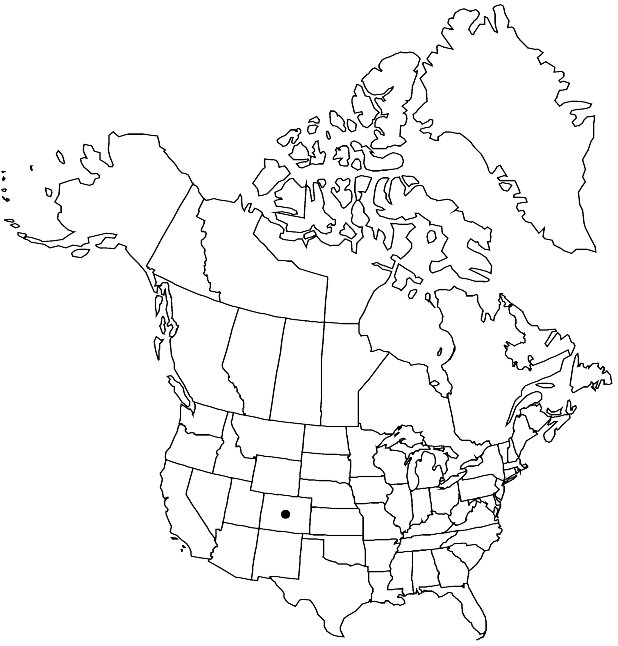Difference between revisions of "Physaria bellii"
Canad. J. Bot. 44: 1662, fig. 1, plate 1, fig. 3. 1966.
FNA>Volume Importer |
FNA>Volume Importer |
||
| Line 49: | Line 49: | ||
|publication year=1966 | |publication year=1966 | ||
|special status= | |special status= | ||
| − | |source xml=https://jpend@bitbucket.org/aafc-mbb/fna-data-curation.git/src/ | + | |source xml=https://jpend@bitbucket.org/aafc-mbb/fna-data-curation.git/src/f6b125a955440c0872999024f038d74684f65921/coarse_grained_fna_xml/V7/V7_1024.xml |
|tribe=Brassicaceae tribe Physarieae | |tribe=Brassicaceae tribe Physarieae | ||
|genus=Physaria | |genus=Physaria | ||
Revision as of 20:19, 24 September 2019
Perennials; caudex simple, (relatively large); densely (silvery) pubescent, trichomes (sessile, appressed), rays furcate, fused at base. Stems simple from base, decumbent to nearly prostrate, 0.5–1.3 dm. Basal leaves (strongly rosulate; shortly petiolate); blade broadly obovate, 1.5–7.5 (width 7.5–26 mm, base gradually tapering to petiole), margins shallowly dentate, (apex obtuse). Cauline leaves: blade oblanceolate to broadly obovate, 1–2.5 cm, margins entire. Racemes dense. Fruiting pedicels (divaricate-ascending to widely spreading, slightly sigmoid to curved), 7–12 mm. Flowers: sepals (pale yellow or yellow-green), narrowly lanceolate to narrowly deltate, 4–8 mm; petals yellow, broadly spatulate to obovate, 9–13 mm, (not clawed). Fruits didymous, slightly flattened (contrary to replum) to uncompressed, 4–9 × 2–8 mm, (strongly coriaceous, apical and basal sinuses narrow, deep); valves (retaining seeds after dehiscence), pubescent, trichomes appressed; replum narrowly oblanceolate to narrowly linear-oblong, as wide as or wider than fruit, apex obtuse; ovules 4 per ovary; style more than 3 mm. Seeds compressed. 2n = 8.
Phenology: Flowering Mar–Jun(-Jul).
Habitat: Dark shale, road cuts, ridge crests, washes
Elevation: 1500-1800 m
Discussion
Of conservation concern.
Physaria bellii is often found in shale and limestone soils of the Fountain/Ingleside, Lykins, Niobrara, and Pierre formations. It is in the Center for Plant Conservation’s National Collection of Endangered Plants.
Selected References
None.
